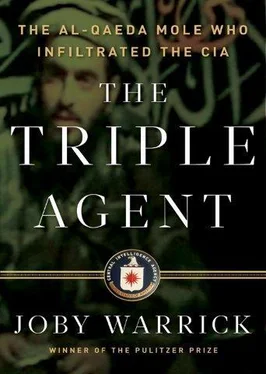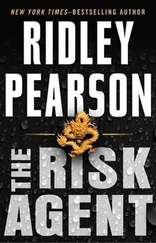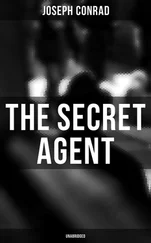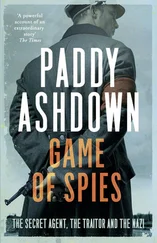Doubleday and its staff embraced my project with energy and enthusiasm, and worked tirelessly over many months to bring it to fruition. I am enormously grateful to editor in chief William J. Thomas, assistant editor Stephanie Bowen, and the many others who provided critical help with photos and illustrations, editing, legal counsel, and marketing. Throughout this journey I was blessed with one of the best gifts any writer can have: a truly great editor. Doubleday’s Kris Puopolo brought extraordinary talents to this endeavor and was a true partner and collaborator at every stage of the process. Her vision and passion made the book immeasurably better, and her patience and wit kept me sane through long weeks of reporting and writing.
I am eternally indebted to my family and friends, whose faith and support sustained me. Among my friends, Paul Scicchitano is owed special thanks for his encouragement and his insights into the publishing world. My parents, Eugene and Barbara Warrick, sister Gena Fisher, and mother-in-law Theresa Jordan were tireless boosters who helped my family during my trips abroad. My wife, Maryanne, cheerfully bore many additional burdens during my yearlong project and was an invaluable partner, offering inspiration and advice at the earliest stages as the idea took shape, as well as research and logistical help, and numerous incisive suggestions on structural changes to the manuscript. My children, Victoria and Andrew, tolerated my absences, virtual absences, abbreviated vacations, missed recitals and ball games, and general distractedness with understanding and grace. We have a lot of catching up to do.
This book is the result of a year’s worth of conversations with men and women who, by necessity, live and work in the shadows. A great many of the primary sources were either active members of intelligence agencies—chiefly the Central Intelligence Agency and Jordan’s General Intelligence Department, but also others—or members of the military Special Forces units. Some were trusted sources developed over years of reporting on intelligence matters for the Washington Post . Others were current or former senior officials in intelligence agencies who agreed to discuss the Khost tragedy and the larger war on terrorism on the condition that they not be quoted or identified directly as sources. The insistence on anonymity, while unfortunate, could be broadly justified by the classified nature of the events and programs at the center of the story. The Khost base, its primary mission, and even the identities of many of its operatives are protected under U.S. government secrecy provisions. Moreover, America’s use of unmanned aircraft to strike terrorist targets in Pakistan, though a well-known fact in both countries, is officially a classified program that cannot be publicly acknowledged by CIA or White House officials. Finally, in addition to government sources, several relatives of slain officers asked not to be associated by name with specific anecdotes and facts. These requests were driven by concern that the speaker might unwittingly divulge sensitive information or complicate ongoing interactions with intelligence agencies.
Because so many sources are anonymous, I have gone to great lengths to separately corroborate each of the essential facts in this narrative, conducting more than two hundred interviews in the places where the events occurred—Afghanistan, Jordan, Turkey—and in various locations in the United States. Memories and documents, including private e-mails and texts, were shared by intelligence officials and operatives from three countries. Other recollections and important contextual details were provided by current and former members of the George W. Bush and Barack Obama administrations, as well as diplomatic officials and U.S. military personnel who either served at the Khost base or were colleagues or friends of the fallen officers. Relatives and friends of each of the individuals killed in the Khost attack provided critical, and often enthusiastic, support. In attempting to understand the thoughts and motivations of Humam al-Balawi, I relied on interviews with family members and former colleagues of his at the Marka clinic or elsewhere, as well as a large body of interviews, essays, and video statements by Balawi himself. I also spoke directly, or through my assistants in Pakistan and Afghanistan, with members of the Taliban and other jihadist groups who either met with Balawi or were personally informed about his activities during his ten months in the Pakistani tribal region.
Despite the diversity of viewpoints, the sources agreed in most cases on the essential details. On the rare occasions when differing accounts could not be reconciled, I made judgments based on which source appeared to have a clearer view of the facts in question. Where sources could not be named in the text or footnotes, I sought to explain the source’s relationship to the characters and events as clearly as possible while honoring promises not to reveal identifying details.
Chapter 1: Obsession
1. The man was called Osama al-Kini: The details of the CIA’s operation against al-Kini were provided in author interviews with two current and two former agency officials with direct knowledge of the events.
2. “This is now a bona fide threat to the homeland”: Author interview with former U.S. government official present at the White House meeting.
3. “If you had to ask for permission”: Ibid.
4. “simultaneous notification”: The basis of the new U.S. policy was described to the author in interviews with two former senior intelligence officials involved in the policy discussions, and confirmed separately by a congressional official briefed on the policy change at the time.
5. a massive truck bombing: For details on the Marriott Hotel attack, see Bill Roggio, “Bombing at Islamabad Marriott Latest in String of Complex Terror Attacks,” Long War Journal , Sept. 21, 2008, http://www.longwarjournal.org/archives/2008/09/bombing_at_islamabad.php.
6. a commander named Sheikh Saeed al-Masri: Details of al-Masri’s expanded role within al-Qaeda beginning in 2007, as well the competition among rival commanders, were supplied to the author in interviews with one former and two current CIA officers involved in counterterrorism operations during the period.
7. Hayden’s initial meeting with his successor: Events described to author in interviews with two intelligence officers who witnessed the exchange.
Chapter 2: Haunted
1. chief liaison on counterterrorism to Britain: Details of Matthews’s experiences in London and her previous work at CIA headquarters and Thailand were recounted in author interviews with eight former agency colleagues as well as two relatives who were in frequent communication with her during the relevant periods.
2. sophisticated double suicide bombing: Separate accounts of the attack were obtained from International Security Assistance Force incident logs for Afghanistan’s eastern district on Jan. 19, 2009, and an interview with a Khost regional police commander who investigated the incident. The ISAF records were first posted by the anti-secrecy Web site WikiLeaks in July 2010.
3. Inspector General, had launched a wide-ranging investigation: For details of the redacted report, see CIA Office of Inspector General, “Report on CIA Accountability with Respect to the 9/11 Attacks,” June 2005, http://www.foia.cia.gov/docs/DOC_0001499482/DOC_0001499482.pdf.
4. list of names remain classified: For a fuller description of the CIA’s deliberations over the release of names, see “CIA OIG [Office of Inspector General] Timeline” at HistoryCommons.com, http://www.historycommons.org/timeline.jsp?investigations:_a_detailed_look=complete_911_timeline_cia_oig_9_11_report&timeline=complete_911_timeline, accessed on Sept. 30, 2010.
Читать дальше












